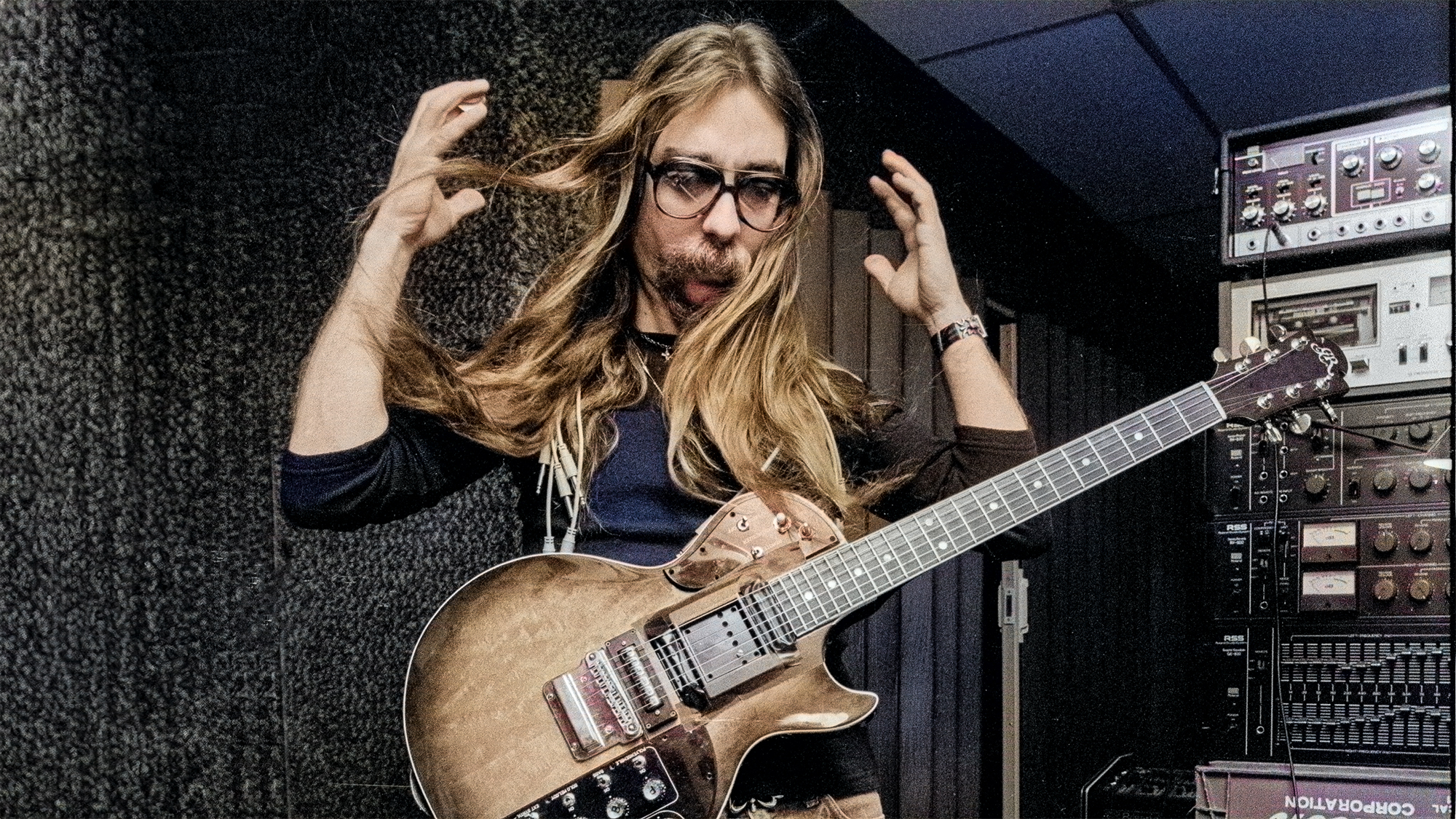Best multi-effects pedals 2025: Do-it-all multi-FX for all styles and budgets
Expand your guitar-playing horizons with these multi-fx options from Line 6, Kemper, Neural DSP and more

Since the early days of the stompbox, we’ve been finding ways to cram more and more effects and options into smaller and smaller cases – and since the innovation of digital signal processing (DSP) towards the end of the 20th century, we’ve excelled at putting hundreds of possibilities at our feet. Nowadays, the best multi-effects pedals are able to replace your rig entirely.
Of course, the multi-effect is also a bit of a controversial tool, largely due to how poorly many of them have aged (here’s looking at you, Line 6 POD…). Indeed, multi-effects were traditionally seen as the bastion of the beginner guitar player, something to help you find your way before you upgraded to ‘proper’ stompboxes.
But with dramatic leaps in both the quality of digital effects and the density of analog circuitry, today’s multi-fx are far more than the insipid addition of Brand-X stompbox sounds to your rig. With an emphasis on modeling, the majority of the best multi-effects pedals are able to not only augment your existing set-up, but replace it entirely.
Whether you want to replicate a vintage tube amp rig or you just want to supplement your existing pedalboard with some fresh new effects, we’ve picked out the latest and greatest multi-effects pedals available today. If you’d like to learn more about multi-fx before you buy, then make sure to check out our FAQs section, otherwise keep scrolling for our top picks.
Top picks
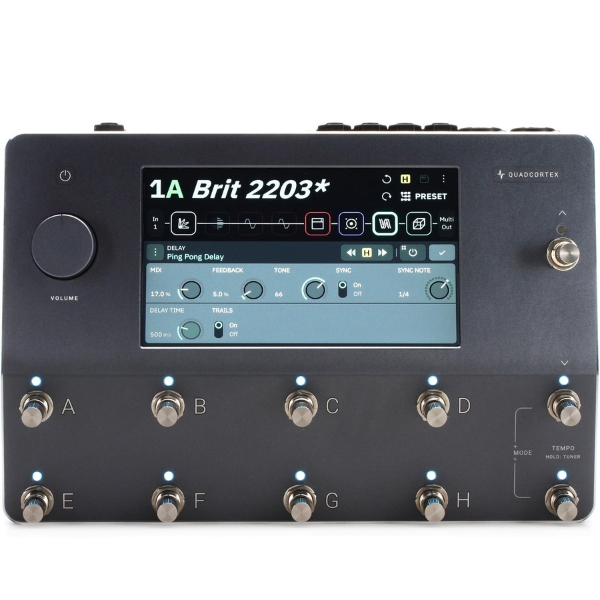
Neural DSP has stolen the show, with this does-everything box that doesn’t just do everything, but does everything better than all the other does-everything boxes out there. An incredible number of amp models showcase this multifarious effect powerhouse at its best, while its IO makes it hugely applicable to every scenario.
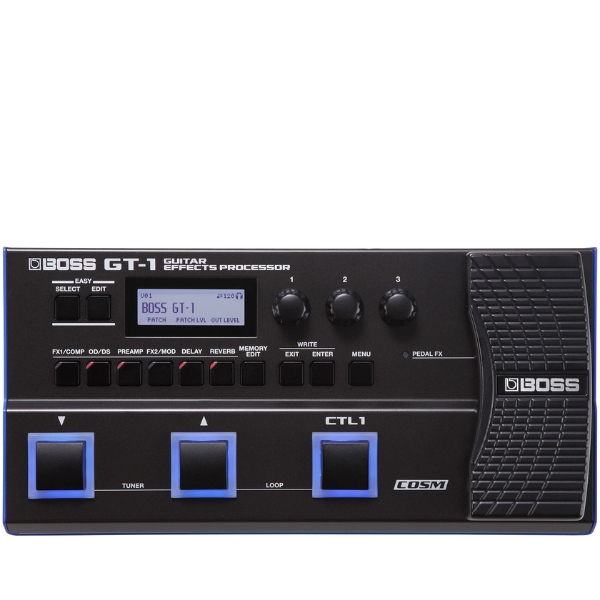
Boss’ GT-1 has been kicking around for some time and yet still has the floor for entry-level multi-effects. It’s a simple device with on-board expression and foolproof operation besides. While you’re not getting the best of Boss, you’re getting a good deal for the money, making this a great starter unit.
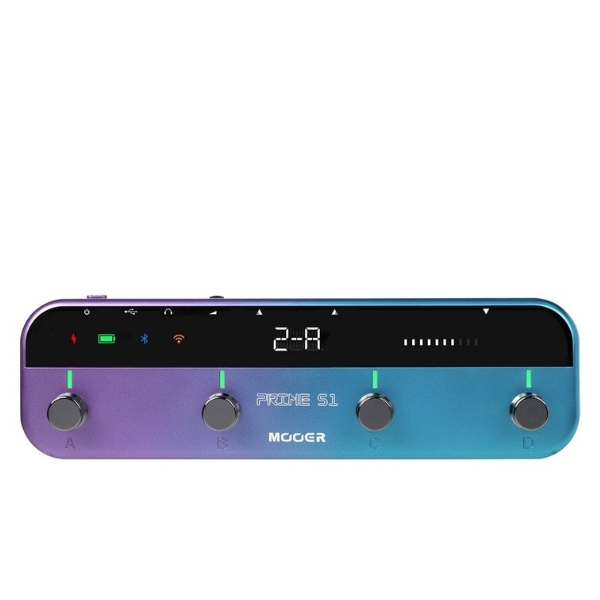
Mooer’s Prime S1 is a slim multi-effects unit designed with portability firmly in mind. It’ll practically slot between the cracks of your pedalboard, or otherwise in your guitar bag’s top pocket as you gallivant around – and a built-in rechargeable battery means you can juice this the same way you juice your phone.
Best overall
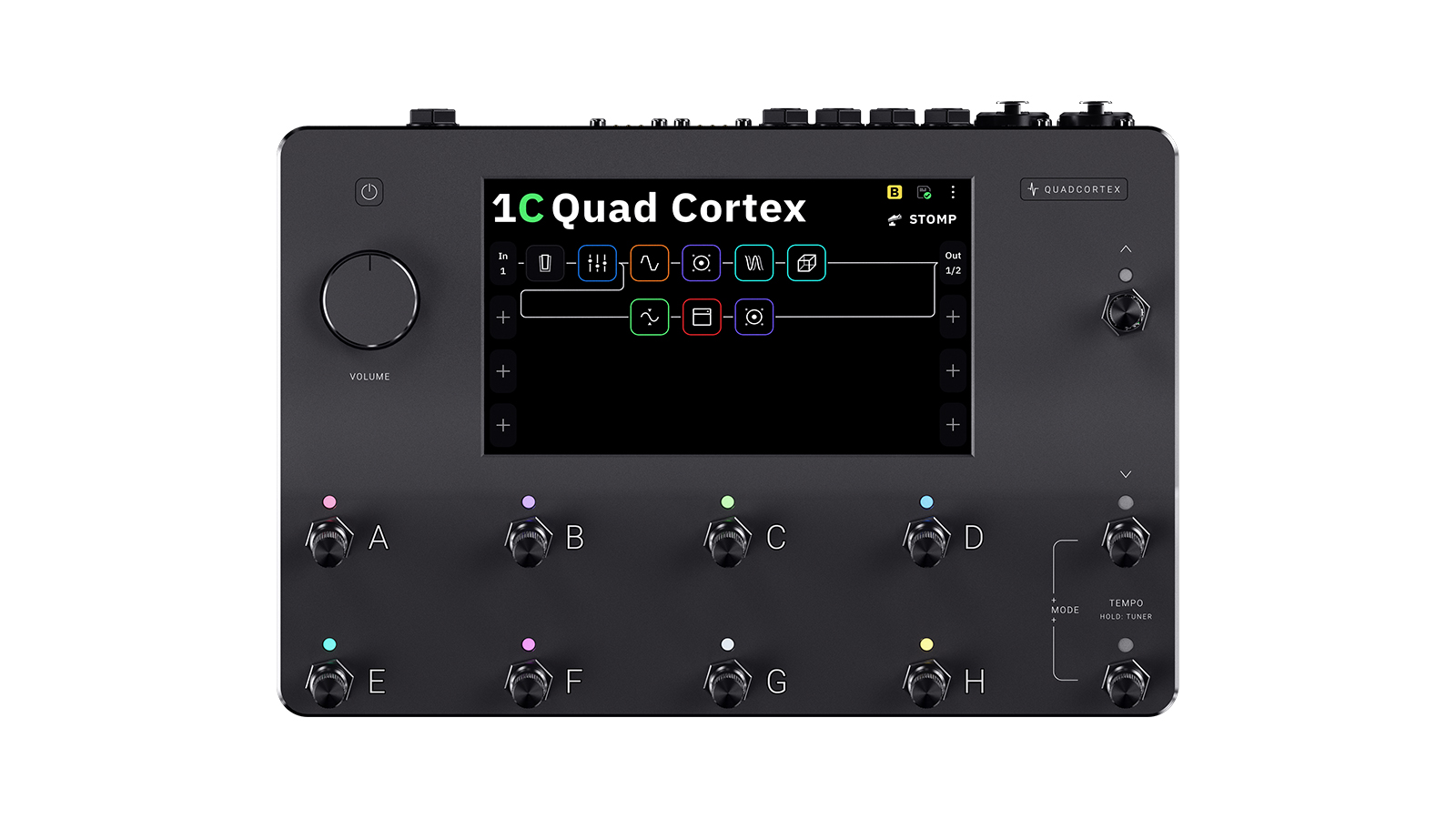
Specifications
Reasons to buy
Reasons to avoid
Well, if you’ve been keeping your eyes and ears open it’s likely you’ve heard of Neural DSP, or at least heard about what they’ve been up to. They started life as a company producing incredible guitar amp plugins for many of the guitar world’s most exciting new talents, and now they’ve delved into hardware with the impressive Quad Cortex.
You won’t be solely using the QC as a multi-effects unit, but with 70+ effects to make the most of, it’d be remiss of us to gloss over them. Over 50 onboard amp models (with over 1,000 more amp algorithms sat in the Sound Library) and over 1,000 impulse responses make up the basis of your tone, and access to so many different effects makes the Quad Cortex a seriously versatile and creativity-inducing piece of gear. We believe it’s by far the best option on the market, if money isn’t a worry for you.
It is a bit pricey, but the physical and aural quality that you get in return is pretty stunning. We think it’s probably the closest you’ll get to tube amp tone and attitude without throwing a tube stage in there somewhere - and that’s a very large tick in the box for us.
Read our full Neural DSP Quad Cortex review
Best for beginners
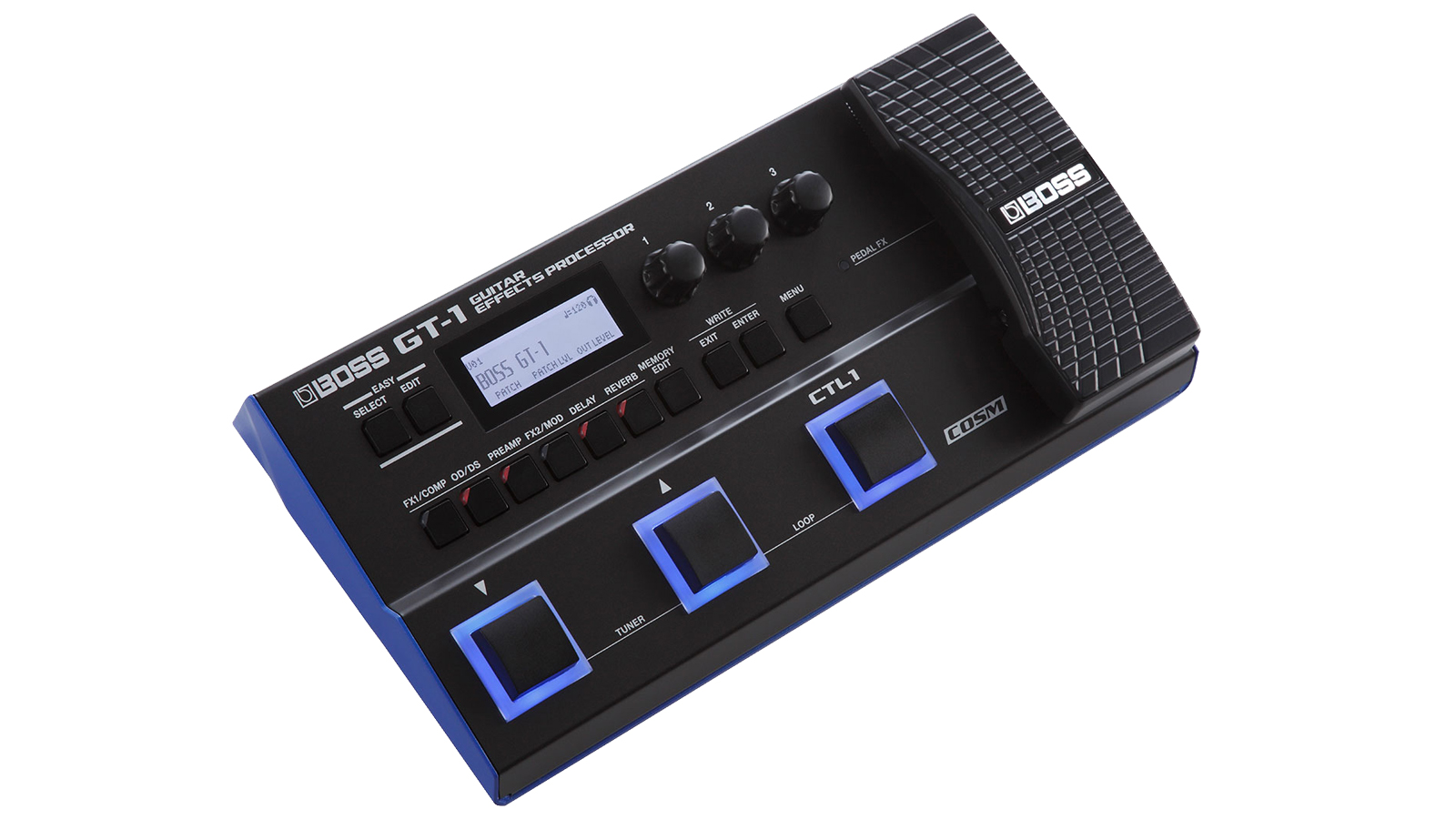
2. Boss GT-1 Multi-FX pedal
Our expert review:
Specifications
Reasons to buy
Reasons to avoid
Boss is one of the kings of multi-effects pedals, with their products gaining a reputation for being solid, durable, high-spec and producing some great tones. The GT-1, although aimed at beginners and those who don’t have so much pedal experience, doesn’t disappoint.
The GT-1 contains 108 different effect types, 99 presets and 99 user patches, as well as a 32 second looper - making this multi-effects unit a versatile and useful learning tool. The looper is also ideal for those who want to practice their timing and internal metronome - especially beginner players.
It can be powered by four AA batteries for up to 7 hours, or you can use a 9V DC power supply to ensure your tone never goes down. We found the in-built USB port to be great for downloading more sounds or using the online editor, or as an audio interface when recording. Granted it’s a bit more simple than we would have liked, but for the money, we can’t complain.
Best budget

3. Mooer Prime S1
Our expert review:
Specifications
Reasons to buy
Reasons to avoid
Mooer’s Prime S1 multi-effects pedal is a recent product of their Intelligent series, and one that prides itself on versatility too. The S1 is rich with effects, offering you 128 different effects, amps and cab tones to work with; an app gives you complete control over all this via Bluetooth, and Mooer’s cloud platform allows you to edit, download and add more effects to the library (including adding your own cab IRs, which is a huge boon for something this cheap).
Though there are amp simulations in the Prime S1, these leave a little to be desired. Still, the wider functionality of the Prime S1 won’t have you holding any grudges – particularly, its built-in rechargeable battery that allows you to use this thing anywhere, and its USB audio out for recording into your device of choice!
In all, the Prime S1 is a supremely affordable, entry-level, slip-in-your-back-pocket multi-effects device. It’s perfect for getting to grips with sounds, sketching ideas, recording on the road or simply practicing with ease at home.
Best compact
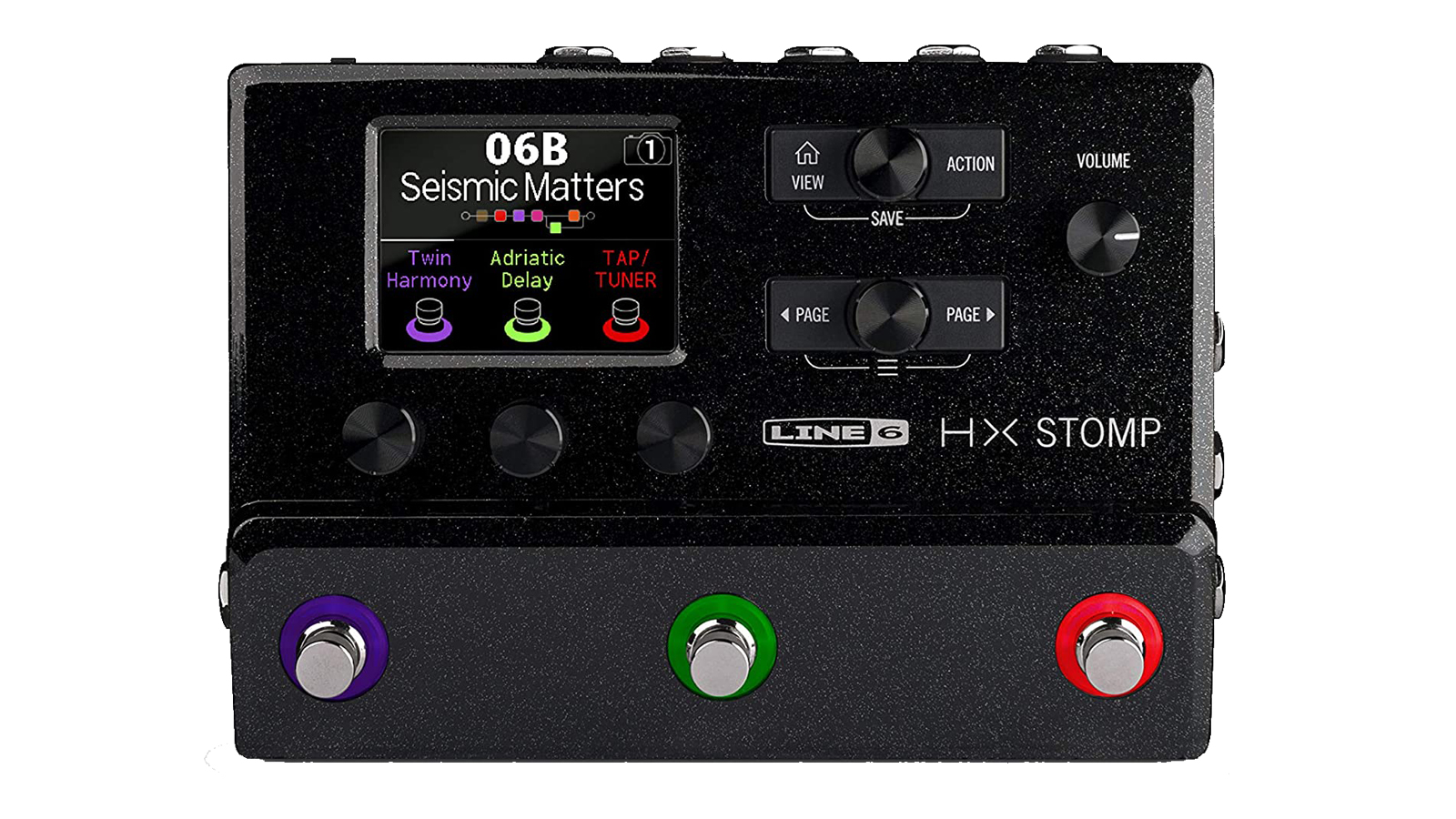
4. Line 6 HX Stomp
Our expert review:
Specifications
Reasons to buy
Reasons to avoid
The HX Stomp is a compact solution for those who’re either looking for a rig-in-a-box setup for a great price, or have had their eyes set on the full-fat Helix and want something smaller and simpler to try out.
On the face of it, it’s a simple, small unit - but don’t let the diminutive size fool you. The capability of the HX Stomp is pretty mind-blowing. With over 300 effects onboard, including legacy Line 6 patches, Helix and M Series effects, we can’t fathom a situation where you won’t be able to find the sound you’re looking for. It’s got all the same amp models as the full size Helix too.
We found that its small size does make it a little bit fiddly to program, but Line 6’s HX Edit software gives you a pretty straightforward editing platform if you’ve got the time to plug in your HX Stomp. Honestly, we aren’t fussed that it’s a bit fiddly when the pros vastly outweigh the cons.
Best for gigging
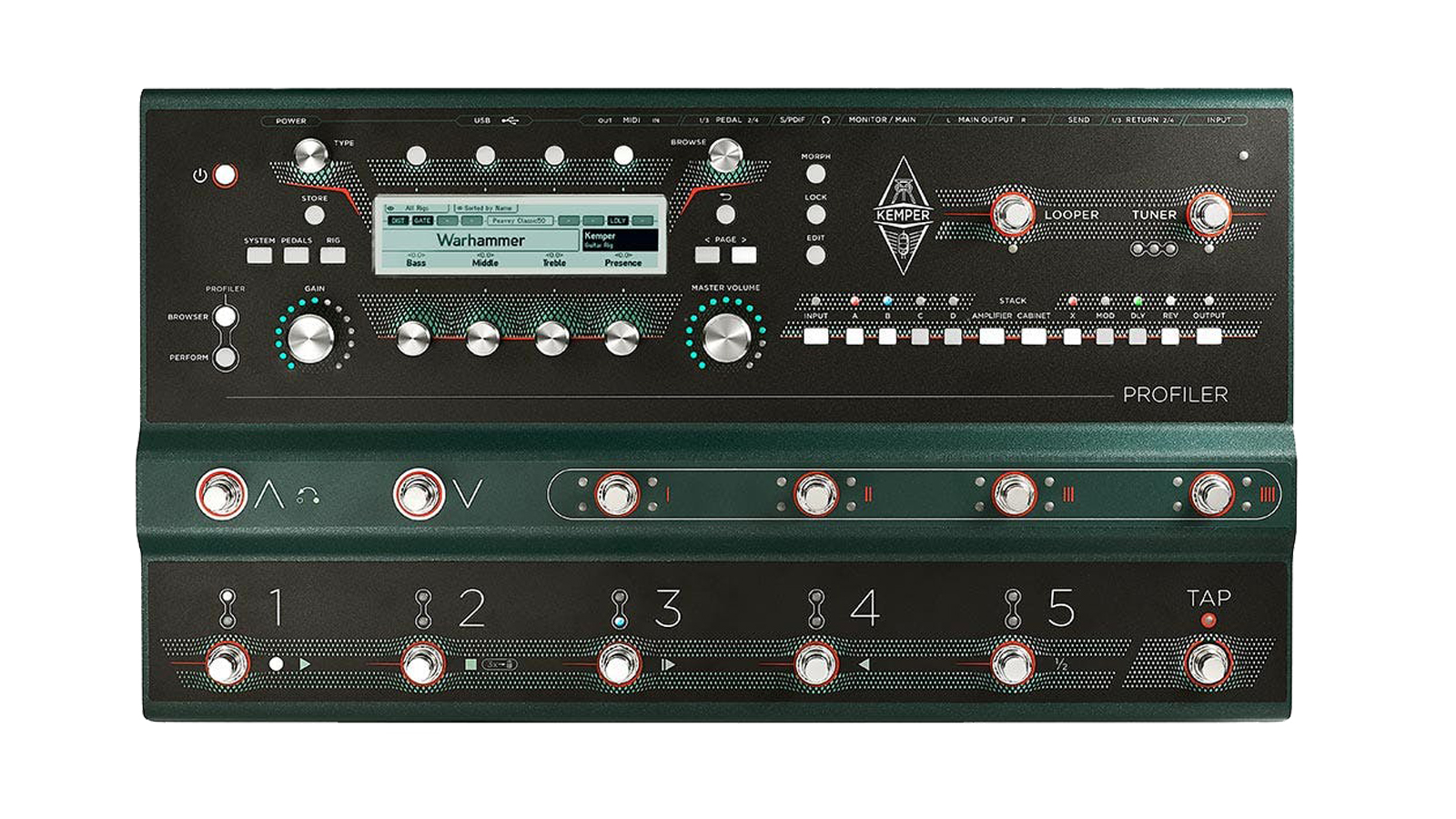
5. Kemper Profiler Stage
Our expert review:
Specifications
Reasons to buy
Reasons to avoid
Kemper has taken the convenience and powerful tonal capabilities of their profiling amplifier range to another level with their Profiler Stage - a powerful, pedalboard-friendly version of their popular head and rack models.
If you’ve experience with Kemper, you’ll notice that the Profiler Stage is housed in a very similar looking control system to the Kemper Remote. Luckily for you, this format is incredibly strong and durable and thankfully, very straightforward to use.
Now, Kemper’s main selling point is that it actually isn’t an amp modeler at all - it’s a Profiler. Kemper states that a profile captures the ‘sonic DNA’ of an amp, and we’d have to agree. The Kemper understands and recreates the personality of an amplifier, rather than just replicating a specific tone. It comes with hundreds of sophisticated and addictive amp profiles already onboard, with thousands more waiting for you in the Rig Manager - you’ll never run out of options.
As far as setup goes, like any complex piece of gear we found it takes a little while to get the hang of, but once you learn it, you’re away. Programming footswitches, effects and performances are all straightforward tasks, meaning you can get on with playing instead of having to tweak your settings - and let’s be honest, you won’t stop playing.
Best versatility
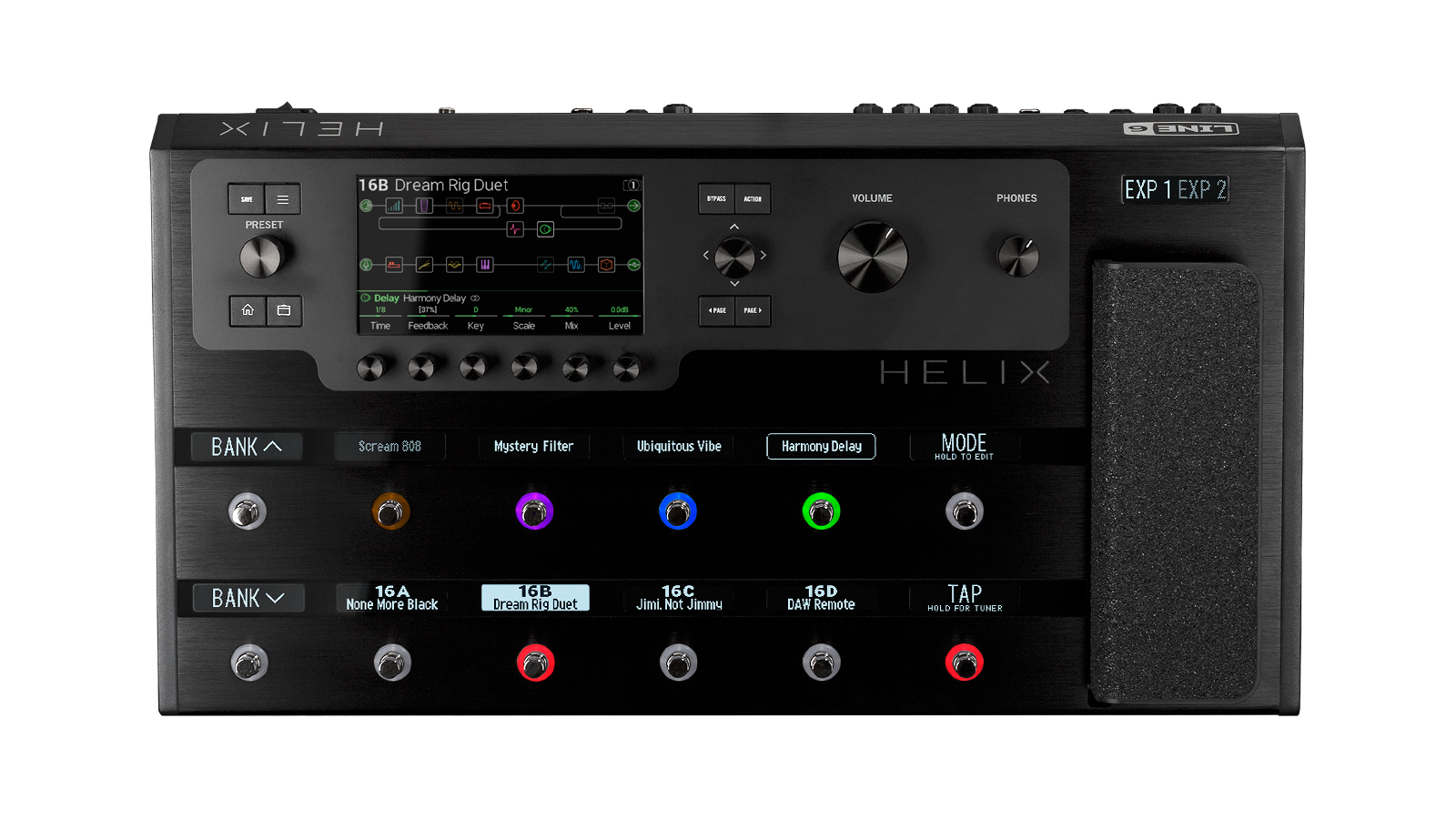
6. Line 6 Helix
Our expert review:
Specifications
Reasons to buy
Reasons to avoid
The Line 6 Helix is something of a stalwart when it comes to these buyer’s guides - and for no other reason than the fact it’s absolutely killer. Line 6 spent years crafting each amp, effect, cab and mic model to go into the Helix, and it shows.
With an exceptionally realistic dynamic response, the Helix does what most amp modelers claim to do, but on a level which is likely to blow you away. The folks at Line 6 literally dismantled the amps and effects they wanted to use, to understand each individual component and the effect it has on your signal chain. No wonder it recreates so many different amp tones so impressively well.
In our tests we found the Helix’s processing power to be hugely impressive, with the ability to run 4 amps and 32 pedals at the same time, all without breaking a sweat. Talk about live stereo capabilities! The integrated expression pedal extends the levels of versatility even further, and even though the Helix requires some tone tweaking, it’s capable of a hell of a lot.
Also consider
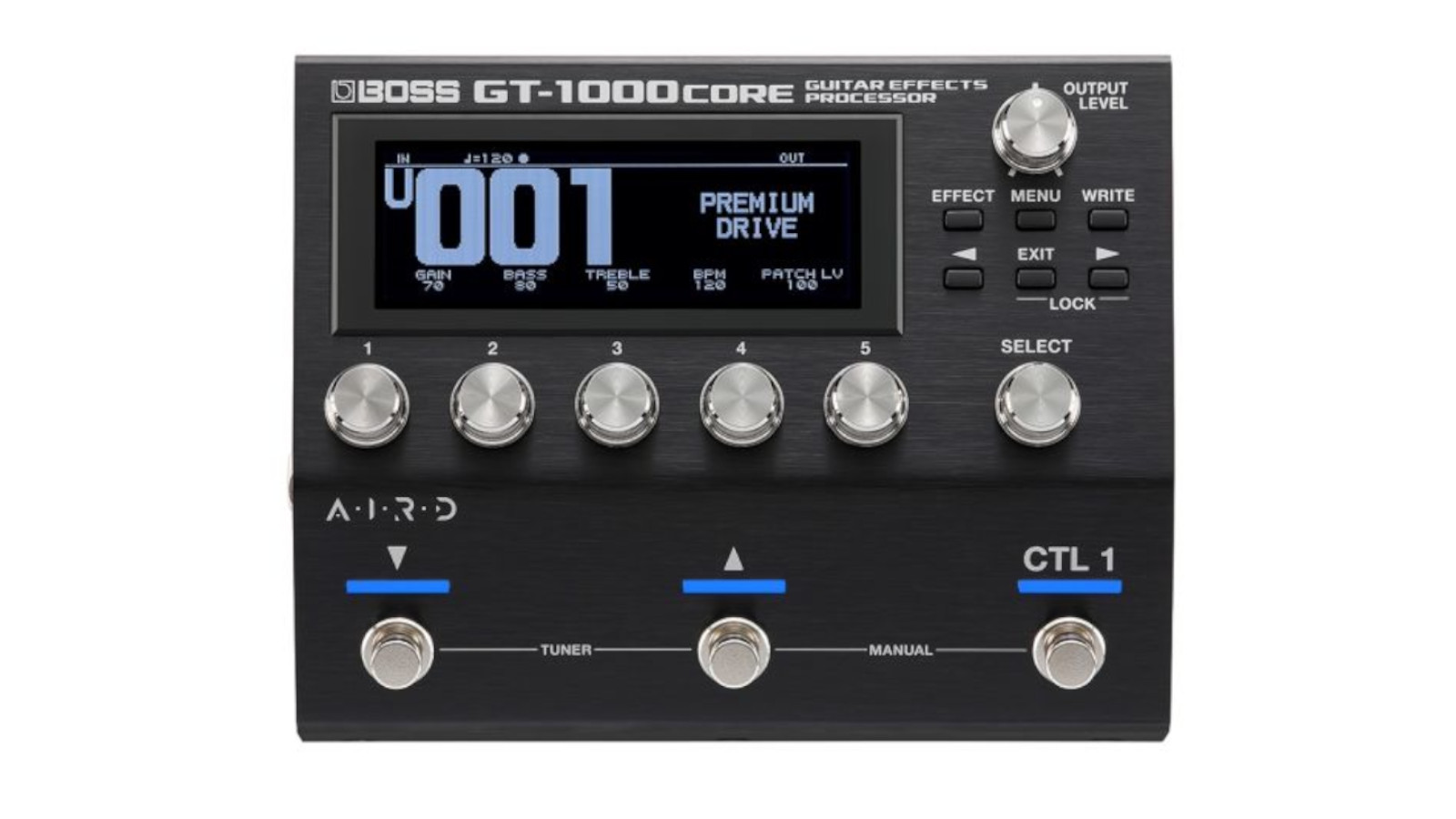
7. Boss GT-1000 Core
Our expert review:
Specifications
Reasons to buy
Reasons to avoid
Boss is the undisputed king of the effects pedal – and it should come as no surprise that its top-flight multi-effects unit is a comprehensive beast of all its own. In 2020, Boss took the internals of its GT-1000 mega-modeler and stuffed it in a smaller package: the Boss GT-1000CORE.
The chassis is of the same ilk as the recent Boss 500 series super-pedals, and the reduced interface size – including the jettisoning of the GT-1000’s on-board expression pedal – makes the GT-1000CORE significantly more versatile. Now the power of the unit can co-exist with your analog pedals, even on a relatively diminutive pedalboard.
There’s not much new to shout about here; you can look forward to 145 different effects and proprietary AIRD-powered preamps, and there are some new presets you can download via a 2.0 version update. The marvel is just how much Boss has squeezed into this little box – and, counterintuitively, how much freedom it gives you.
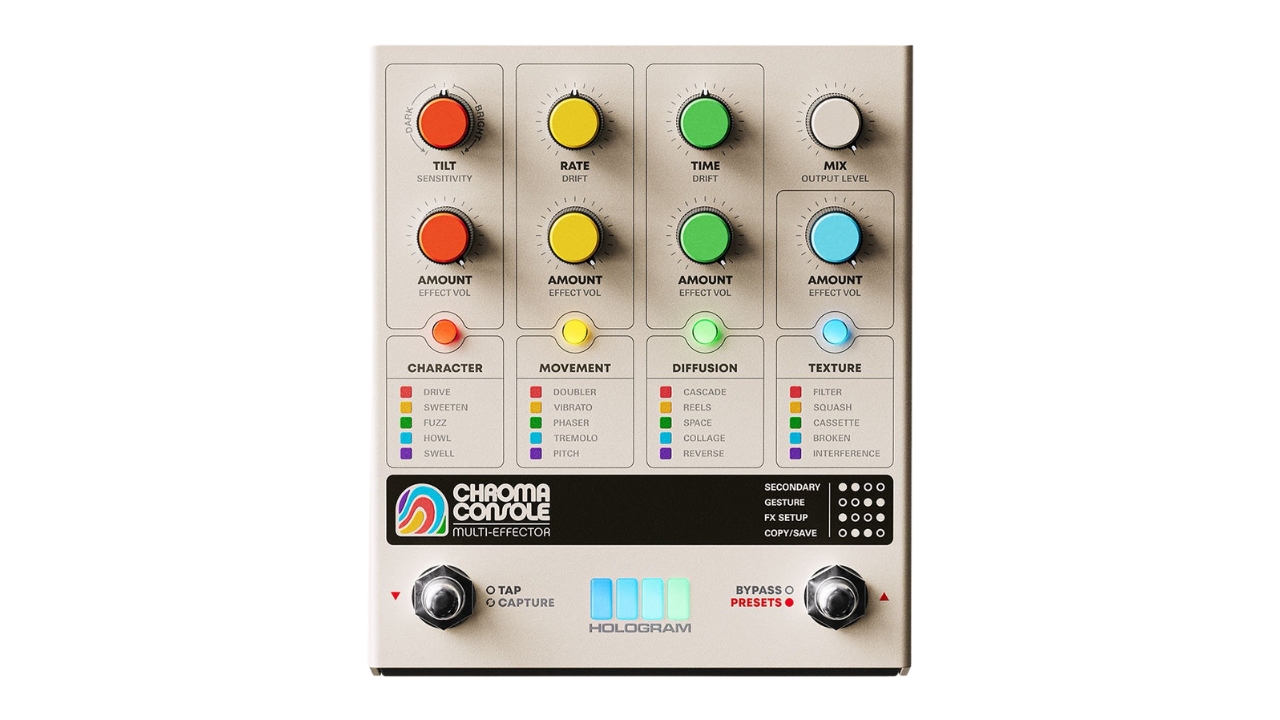
8. Hologram Chroma Console
Our expert review:
Specifications
Reasons to buy
Reasons to avoid
Hologram Electronics is a darling brand in the boutique space, whose forward-thinking digital pedals have come to define the sheer possibility of clever DSP design. The brand’s shifted a little with the Chroma Console, from the off-kilter futurist wizardry of its standalone devices to a world of incredible effects-based utility.
The Chroma Console is an unconventional multi-effect, which offers access to 20 bespoke effects through four ‘modules’; you can use the 80 user presets available to you to build your own bank of incomparable effects, all built from vintage-inspired algorithms.
The Hologram quirkiness comes with the woozy nature of some sounds – and with the clever ways in which you can up the wooze. For instance, you can record knob movements into your patch, to bake in modulation and automation to your own liking. MIDI functionality gives even more functionality, and an audio looper completes the picture. This is a truly boutique multi-effect, and small enough to make a massive statement on any 'board.
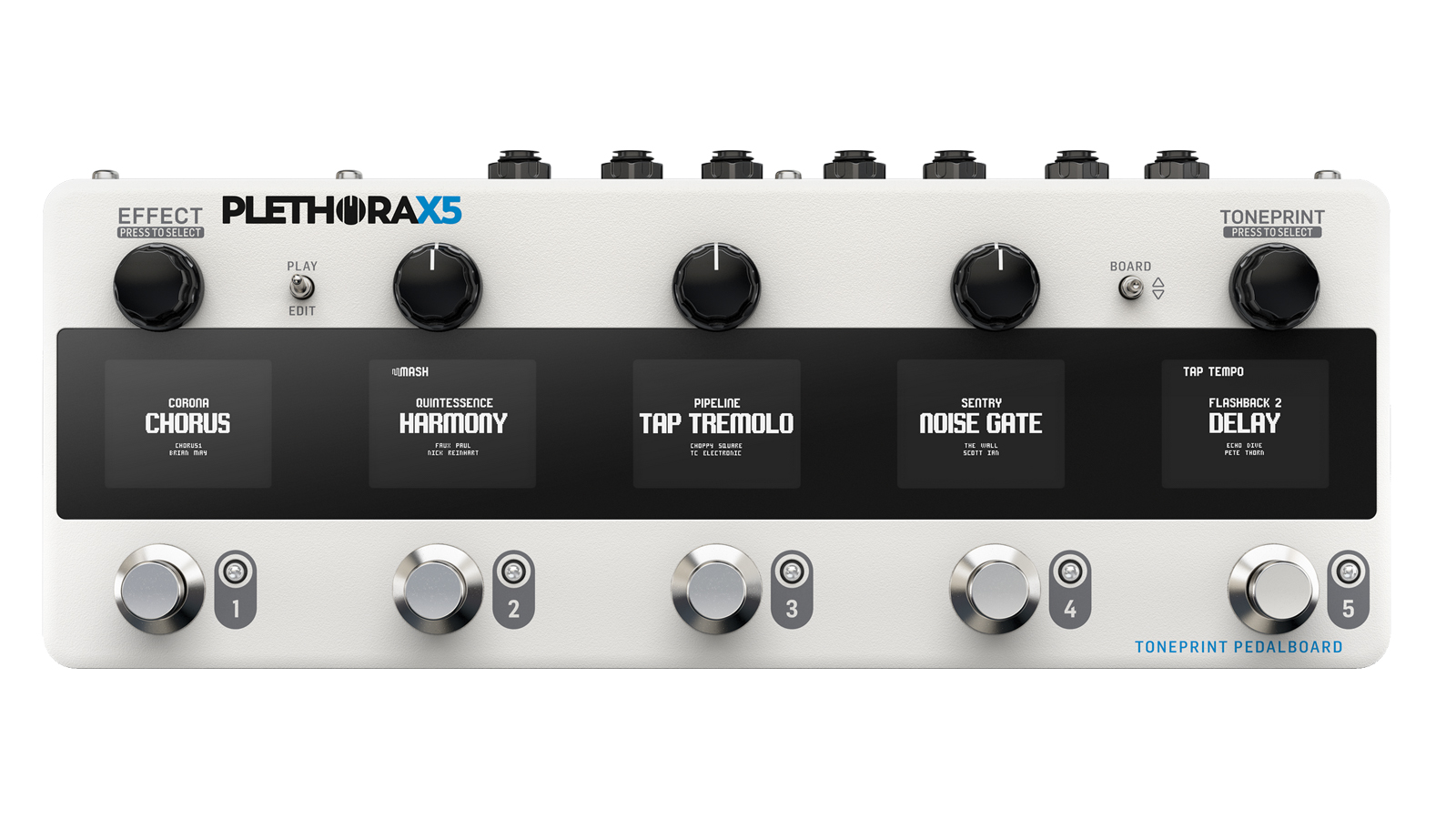
9. TC Electronic Plethora X5
Our expert review:
Specifications
Reasons to buy
Reasons to avoid
The TC Electronic Plethora X5 is a late entry into this battle of the multi-effects, but for the price it could be one of the best of the bunch. Most of us are fans of TC Electronic’s great sounding effects, and as the Plethora X5 makes the most of TC’s entire range of TonePrint pedals, you’ll honestly struggle to find a bad sound in this unit.
The Plethora X5 comes pre-loaded with various different boards - consisting of effects such as the Hall of Fame reverb, Flashback delay, Viscous vibe among many others - so you can either make the most of what's already in the Plethora, or you can create your own boards to really sculpt your tones to suit you.
Despite the Plethora's pedal-choice limitations, what it can do is still pretty remarkable when you take into account that it costs less than a Mexican Strat. Taking advantage of TC Electronic's TonePrint technology, the level of tweakability is impressive. It may not house hundreds of different drive pedals or have mental MIDI capability, but if all you want is multiple effects from your multi-effects pedal, then you may have stumbled upon a winner.
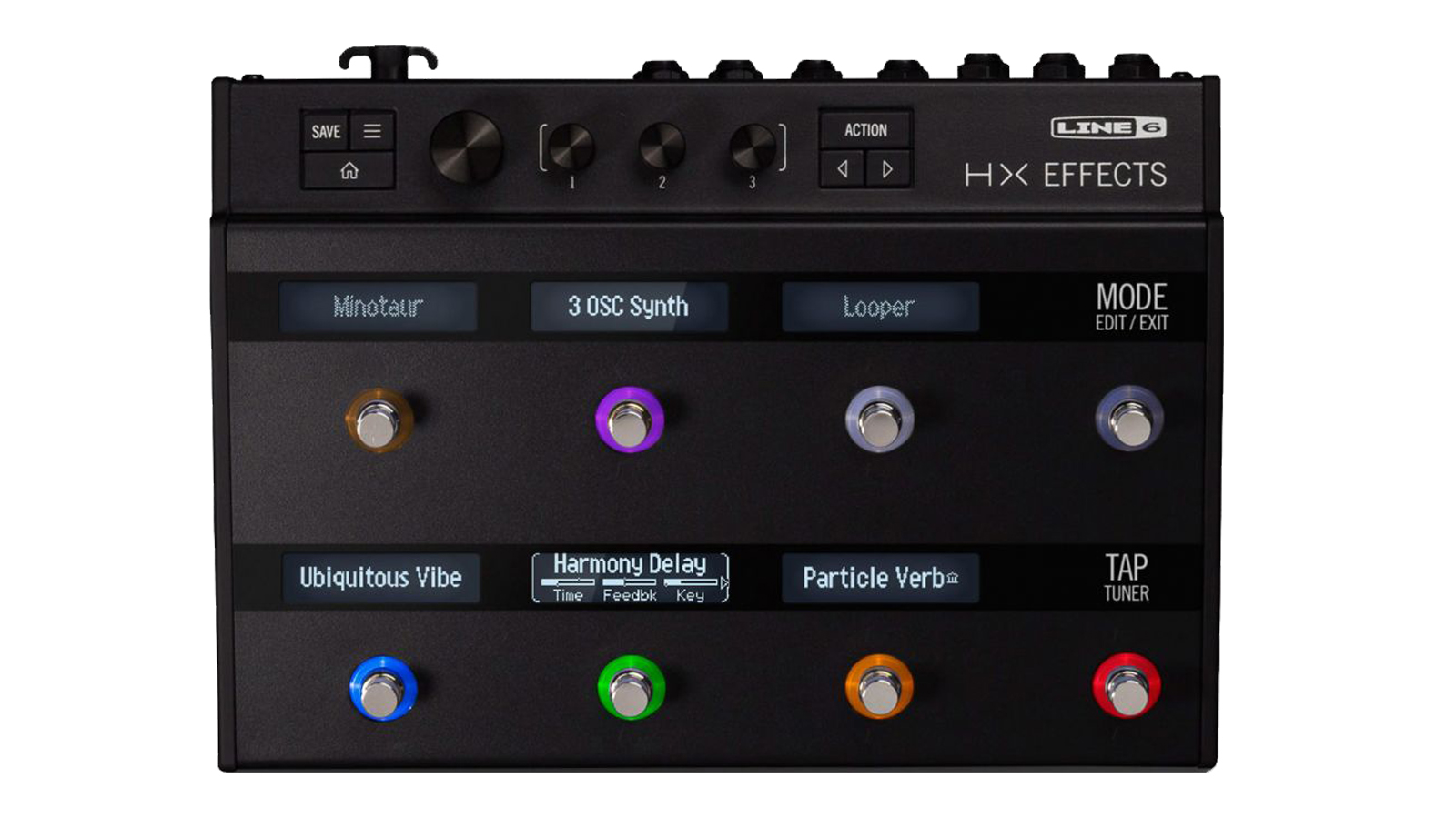
10. Line 6 Helix HX Effects
Our expert review:
Specifications
Reasons to buy
Reasons to avoid
The Line 6 Helix HX Effects unit takes the killer array of effects from the Helix amp modeler and strips away the added extras, allowing you to make the most of enveloping reverbs, mind-bending stereo delays and more, without any added extras getting in the way.
Line 6 designed the HX Effects to become part of a pre-existing pedalboard setup, but we found it to be wholly capable of standing alone alongside a clean amp. With complete focus on effects processing, the HX Effects uses the impressive audio engine from the full-fat Helix - meaning the vast array of over 100 onboard effect models can take centre stage and bring your playing and your tones to the next level. Capable of producing great distortion, modulation and pitch/synth tones in the blink of an eye, there's not much to complain about here.
A streamlined, slick look accompanies the HX Effects' capabilities nicely, with a 'less is more' approach proving to be a welcome escape from the usually hectic world of multi-effects. The small "scribble strips" above each footswitch are frustratingly small, but still readable with some focus. As an easy-to-use option, or a first foray into the world of multi-effects, you'd be hard pressed to find something wrong here.
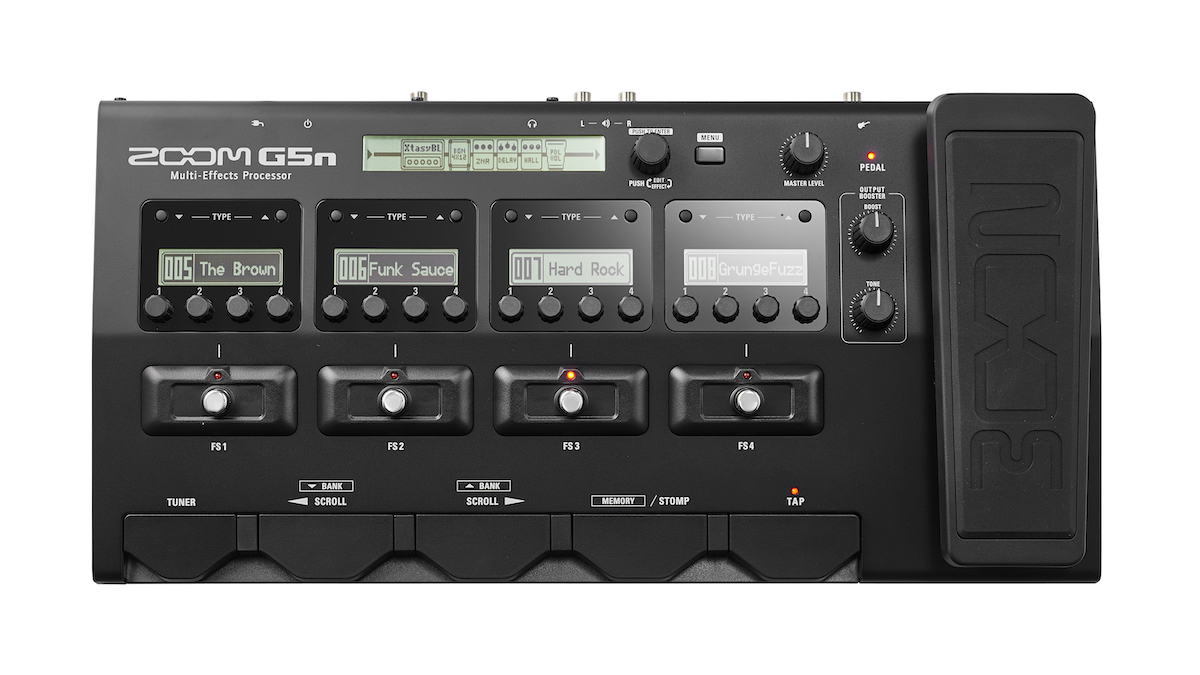
11. Zoom G5N Multi-Effects Processor
Our expert review:
Specifications
Reasons to buy
Reasons to avoid
The Zoom G5N packs an incredible 100 effects and 26 amp models at a price that in some instances will get you just a single boutique stompbox. Despite the low cost, the G5N sounds absolutely phenomenal and has lots of options for shaping your sound.
All of the great amplifier models are accurately emulated here, including classics like the Marshall JCM800, Fender Twin Reverb, and Mesa Boogie Mk3 all sure to find pride of place on your own backline. The modulation effects are fantastic too, particularly the tremolo and reverb, but you’ll get plenty of mileage out of the various overdrives and distortion effects available.
Connect to the Zoom Guitar Lab software and you can load a whole host of presets, including custom patches made by Kiko Loureiro of Megadeth and Jeff Schroeder of Smashing Pumpkins. Combine that with some great connectivity options and you’ve got a powerful piece of gear at an incredible price point.
FAQs

Choosing the best multi-effects pedal for your own rig is an exciting thing, but can also be quite time-consuming – not unlike every effects-laden King Gizzard album. Even if only for the sheer volume of incredible options out there, choosing the right one for you is a toughie. To remedy that, we’ve put together some buying advice that lets you get down to brass tacks and select the most important aspects you’ll need to consider when making a choice about your new multi-effects pedal.
What should I look for in a multi-effects unit?
If you’re just getting started on your guitar-playing journey, then a multi-effects pedal is your best entry point into exploring the vast array of sounds available to you as a player. Having a great many effects at your fingertips (or at your toes, as it were) can really help you hone in on the sounds you love; many multi-effects pedals even come with presets that emulate the sounds of famous guitar players, so you have a jumping-off point to work from.
For players who’ve already got a good grasp on the sounds they like, a multi-effects pedal can help condense a large rig down for easier gigging, augmenting your already painstakingly created pedalboard. Mixing with regular stompboxes is a great way to create a hybrid pedalboard, giving you the best in digital and analog effects.
It’s not just your old stompboxes that can be replaced with your multi-effects pedal either. The majority of multi-effects pedals will also feature some kind of amplifier and cabinet simulation. This means you can forego your amp entirely, taking your entire rig in the pocket of your gig bag to your next show!
We can hear the tone purists hissing in the back, but for those world-weary guitar players who’ve been lugging their heavy tube amps across the country for years, the idea of downsizing your entire rig into one unit is certainly a tempting one.
Are multi-effects better than individual pedals?
For what seems like forever, guitarists have been arguing over whether multi-effects pedals are better or worse than their individual brethren. Honestly? The jury’s still out. There are convincing arguments for each camp, but there are some factors you should definitely consider before buying one of the best multi-effects pedals.
For one, with a multi-effects pedal, all of your effects are in one place and one unit, making gigging a lot easier. Sure, you can get a pedalboard and piece together a killer mothership of brilliant effects, but it won’t be anywhere near as convenient as being able to recreate basically any rig and collection of effects, with one unit. The tone you can create with one Helix or Kemper will likely sound much cleaner and more precise too, with less potential for background noise and hum.
One big plus-side for multi-effects and amp modeling is that you can just go straight out to the PA system when gigging, removing the need for a speaker cab on stage, and saving you a considerable amount of backache. As long as your sound guy doesn't hate you, you should have no problems getting the exact tone you want out into the room, for all to enjoy.
Should I get a floor modeler?
You might have heard the term ‘floor-modeler’ being bandied around before, and this is because they’re all the rage right now amongst guitarists. A floor modeler is a very advanced multi-effects pedal, and as well as imitating your amps and effects, these boast a lot of features and options for routing, meaning you can rock up to your next show with your whole rig in a bag.
This may sound great, but a lot of floor modelers can result in option paralysis for less experienced players, whereby you’ll spend more time menu diving and tone tweaking than actually playing. So whilst advanced floor modelers are really quite good, we’d recommend holding back for something simpler if you’re just getting into guitar playing and experimenting with sounds.
If you’re looking at replacing your entire rig and you’re a regularly gigging player, you’ll need to think about monitoring. Relying on those 30-year-old floor wedges at your local venue to translate your scrupulous guitar tone will not end well, trust us on that one. So if you want to take this route, we’d recommend looking at an FRFR speaker to give you a perfect mix on stage or in the rehearsal room.
What connectivity do I need?
It’s a good tip to check out what kind of connectivity your multi-effects pedal has. If you’re integrating it into a hybrid pedalboard and amp set-up, for example, an FX loop will come in seriously handy, as will a preamp input for certain rigs.
If you like to record, a direct or USB out will allow you to go straight into your DAW or audio interface. This means you can use your custom guitar tones for recording demos or even fully-fledged songs. This connection can also double as a method to load-in custom presets, or give you more options for sculpting your own that may be beyond the limitations of the small displays on the unit itself.
If you’re uncertain of the connections your potential multi-effects pedal has, then it’s wise to look at the full specs list on the manufacturer's website. Failing that, you could just find some pictures of the unit online and check those out to see if it has what you need.
How we test
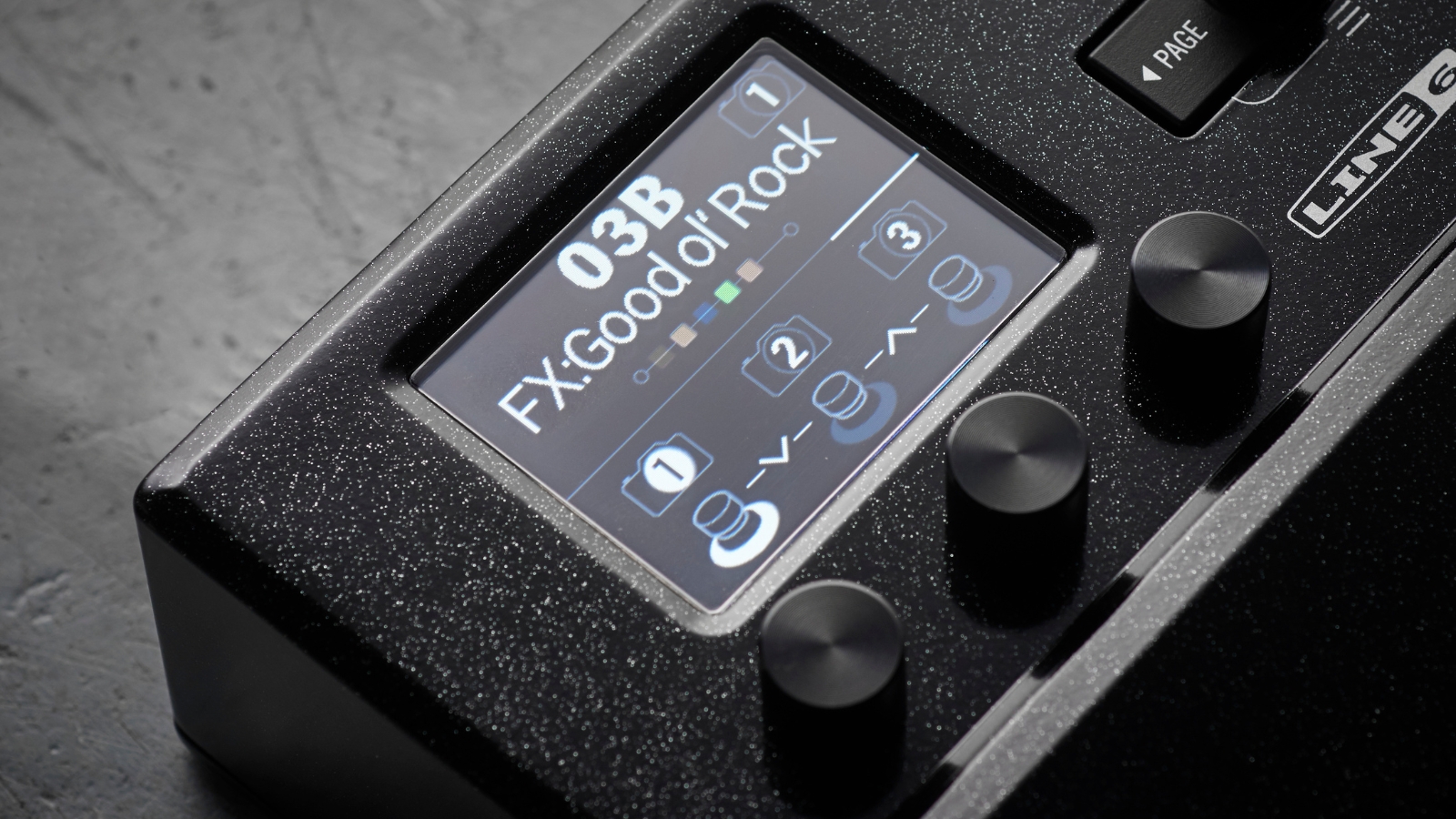
At Guitar Player, our team of seasoned musicians has extensively explored the realm of multi-effects pedals ever since the first models started arriving in the 80s. Since then we've been rigorously testing various models in real-world scenarios to provide you with practical and dependable reviews and recommendations.
Our curated selection of the best multi-effects pedals embodies exceptional versatility, intuitive interfaces, and outstanding performance. We meticulously assess factors such as effects quality, ease of use, build durability, and overall sonic capabilities to ensure that these pedals stand as prime examples of multi-effects excellence.
With the expertise of Guitar Player, you can be assured our recommended multi-effects pedals are all meticulously evaluated by actual musicians. Whether you're a stage performer, studio enthusiast, or home player, we're sure you'll find the perfect multi-effects pedal to elevate your playing and inspire your musical evolution.
Read more on how we test gear and services at Guitar Player.
Related buying guides
You can trust Guitar Player.
- Unplug and unwind with the best acoustic guitars
- Or raise hell with the best electric guitars
- Plug in with one of the best guitar cables
- You'll need one of the best pedalboard power supplies
All the latest guitar news, interviews, lessons, reviews, deals and more, direct to your inbox!

Matt is a Junior Deals Writer here at Guitar Player. He regularly tests and reviews music gear with a focus on guitars, amps, pedals, modelers, and pretty much anything else guitar-related. Matt worked in music retail for 5 years at Dawsons Music and Northwest Guitars and has written for many music sites including MusicRadar, Guitar World, Guitar.com, Ultimate Guitar, and Thomann’s t.blog. A regularly gigging guitarist with over 20 years of experience playing live, writing, and recording in bands, he's performed everything from jazz to djent, gigging all over the UK in more dingy venues than you can shake a drop-tuned guitar at.
